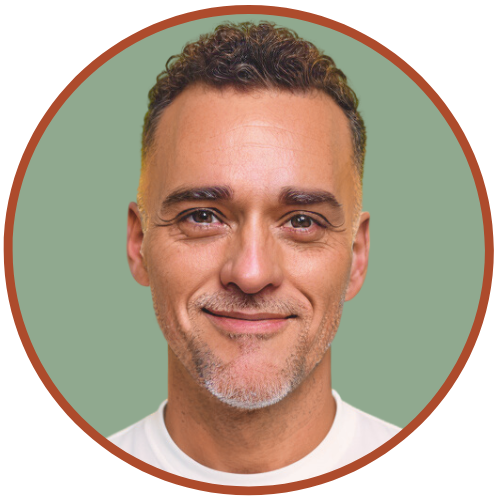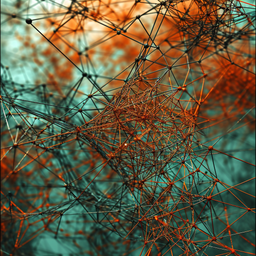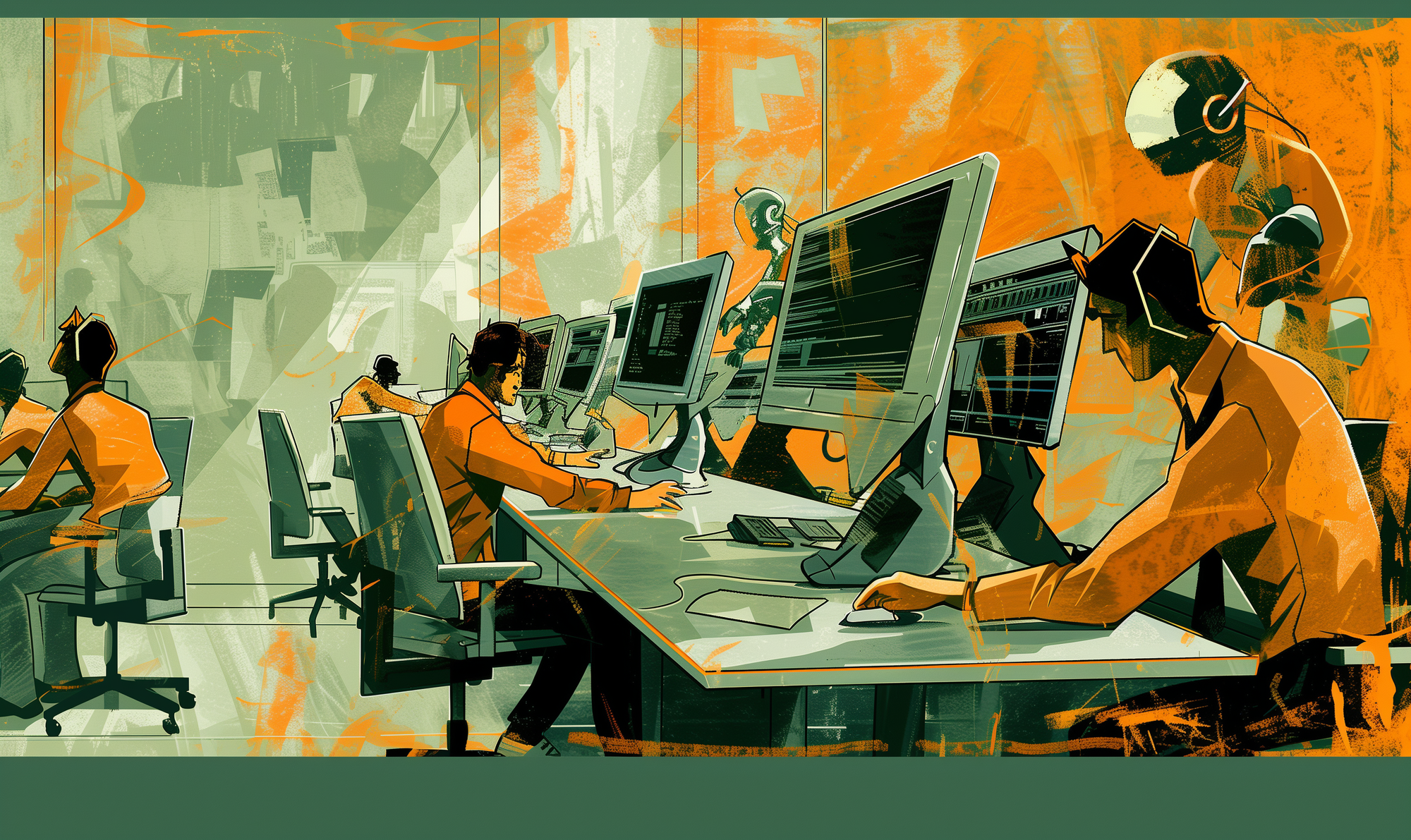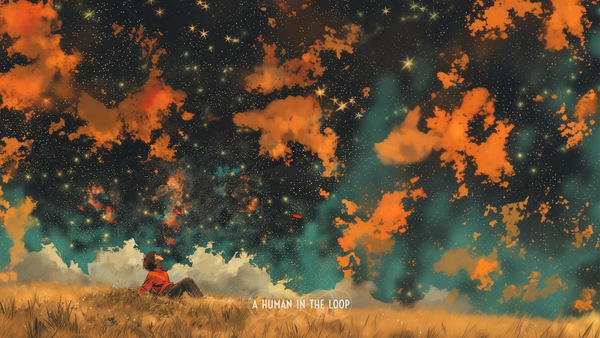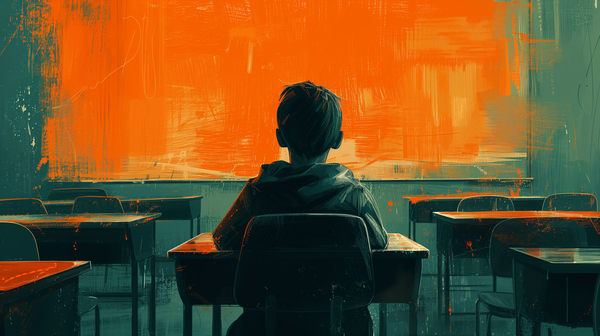Why Running from Discomfort Is Like Fleeing a Bear: Lessons on Resilience and Courage
You should never run from a bear. First in a 6-part series for anyone who feels adrift and needs direction.

Sit in Your Discomfort | First in a 6-part series for anyone who feels adrift and needs direction.
#1 Sit in Your Discomfort
I cannot sit still. I don’t like it. Never have.
As a kid, I would fidget and squirm in my seat.
In-class writing assignments were a consistent trigger of this behavior. I’d bite my nails, tug on my ear, and twirl my hair — careful not to make it fro.
If it didn’t mean punishment, I would have gotten out of my seat and walked out of the classroom.
I’ve come a long way since then, but I still catch myself picking at my cuticles or biting the inside of my cheek whenever I write. Anyone else do that, or just me?
To be totally upfront with you, I’ve walked away from my desk three times while writing this piece. Not out of frustration — okay, maybe a little — but to move away from the fear of what I’m thinking, only to find myself doing some non-essential chore.
Yeah, there are dirty dishes in the sink, but do I really have to attend to that task right now?!?
Task lists? I’m a fan. I write one every day.
Then I take the list and basically play a game of leapfrog all over it, getting easily distracted by whatever “urgent” activity that flies in my direction.
There has yet to be an app, tool, or technique that’s helped.
If I’m already overstimulated by the external world, relying on an external solution might not be the best idea, right?
I Feel Everything, and It’s Too Much
Being so easily distracted isn’t always because of external stimuli. The “call” can, and often, come from inside the house.
To say I am aware of my body would be an understatement.
I am perpetually scanning my body. It is like a full-body MRI or a surveyor scanning a vast terrain searching for landmines. I’m always on the lookout for something to be wrong.
This innate skill was further developed when I was an undergraduate theatre major. Movement classes, vocal training, and activating the tiniest of muscles to embody a character and convey an emotion. The body is an actor’s instrument. Being able to control it is part of the craft.
In grad school, studying acupuncture and integrative medicine, I went deep into textbook knowledge — learning both Eastern and Western medicine. human anatomy, physiology, and pathology.
I explored new terrain, mapping the energetic highways (meridians) where acupuncture points are distributed like mile markers, each with a distinct name, number, and purpose.
I gained a deeper appreciation of Western Medicine, delving into the terminology and mechanisms of human anatomy, physiology, and pathology.
Knowing everything about the human body sure did amplify my hypochondriasis while annoying the fuck out of every doctor I’ve seen ever since.
The slightest ache or sharp sensation can grab my attention, shifting my focus away from the present moment and catapulting me into catastrophic thinking.
It isn’t fun. But it is human.
It’s instinctual to move away from the source of pain.
Pain and discomfort are our body’s way of alerting us to potential harm. This adaptation throughout human evolution has kept us safe from harm.
But what if it isn’t physical harm we’re retreating from?
Don’t Worry, Be Happy?
Sometimes, we stay busy to avoid painful emotions or overwhelming thoughts.
This makes sense. We’re constantly being told to cheer up, that feeling better is the goal, and that we have the right to be happy.
But what are we neglecting in our pursuit of happiness?
What am I avoiding when I choose the tasks that make me happy?
How close can you get to the edge of understanding your discomfort?
I love cleaning and organizing because it gives me a sense of control. It gives me the satisfaction of accomplishment.
I run to it when I don’t feel in control of my life or when I feel overwhelmed by tasks like applying for jobs or dealing with debt.
Yes, I’m a procrastinator.
At its core, procrastination isn’t laziness—another fun trait of mine—but the inability to accept the difficult or painful feelings associated with the task or action.
In the moment, it can provide temporary relief from the discomfort.
Seeking distraction — however fun and pleasurable it may be — denies us the opportunity to sit with our discomfort.
In these moments of unease, there is an opportunity for profound personal growth.
Discomfort, whether emotional or physical, challenges us to confront our vulnerabilities and extend the edges of our comfort zones.
It’s an opportunity for introspection, an invitation to examine and question our deeply held beliefs and assumptions.
This introspection is vital for personal development. I’m often surprised by what I discover when I direct my attention inward.
It can make us feel more equipped to navigate the uncertainties of life.
I’ve spent many years trying to curb this behavior — why I move away from the slightest bit of discomfort — to acknowledge it in the moment and get closer to understanding why.
It isn’t easy. I never said it would be.
So, what about the bear?

You Never Run From A Bear
[Disclaimer: I am not a bear expert. I have never come in contact with a bear in the wild. Please don’t take my analogy as a recommendation. Learn more here.]
If you ever encounter a bear in the wild, resist the impulse to run. Fleeing can trigger a bear’s instinct to chase.
Instead, you stand your ground and make yourself look big.
Sitting in discomfort — like being face-to-face with a bear — demands courage.
Running away from difficult emotions may feel right, but sometimes, you have to stand your ground and make yourself big.
Pausing in the uncomfortable stillness — while your heart races and your mind conjures up a million horrific thoughts — gives you an opportunity to learn something about yourself.
Sitting in discomfort cultivates resilience, teaching us that we can endure and adapt to an overwhelming world constantly changing.
But like any practice, it requires a consistent commitment and may take a lifetime to learn.
I still catch myself finding ways to stay busy as a way to avoid painful feelings that I have known for decades.
But in those moments, I take a brief pause and ask myself:
- Where are you? What are you doing?
- How did you arrive at this moment?
- What are you feeling?
- What are you avoiding? What does it mean to you?
- What would it mean to face it? What would happen if you chose not to?
And with maybe a bit more clarity, I can choose: 1) Keep doing what I am doing or 2) Return to the source of my discomfort.
This isn’t as easy as it sounds. But over time, I’ve been able to catch myself much closer to the epicenter of the discomfort I am avoiding.
Like building muscle, you will start to feel stronger, experiencing the compounding effect of these tiny moments of awareness.
You may discover greater empathy for the people in your life and begin to approach the world’s complexities more easily with open arms and a willing heart.
So, the next time you catch yourself avoiding an important task, conversation, or one of the many life stressors, I invite you to pause and reflect.
Ask yourself the same questions I do and see how close you can get to the edge of understanding your discomfort.
Don’t worry. You don’t have to linger too long.
And at least it’s not a bear.
I appreciate you taking the time to read my work. If you enjoyed this piece, share it with the people in your life who you think would enjoy it. Paid subscribers can share their takeaways and feedback in the comments.
If you’re ready for part 2, here you go:
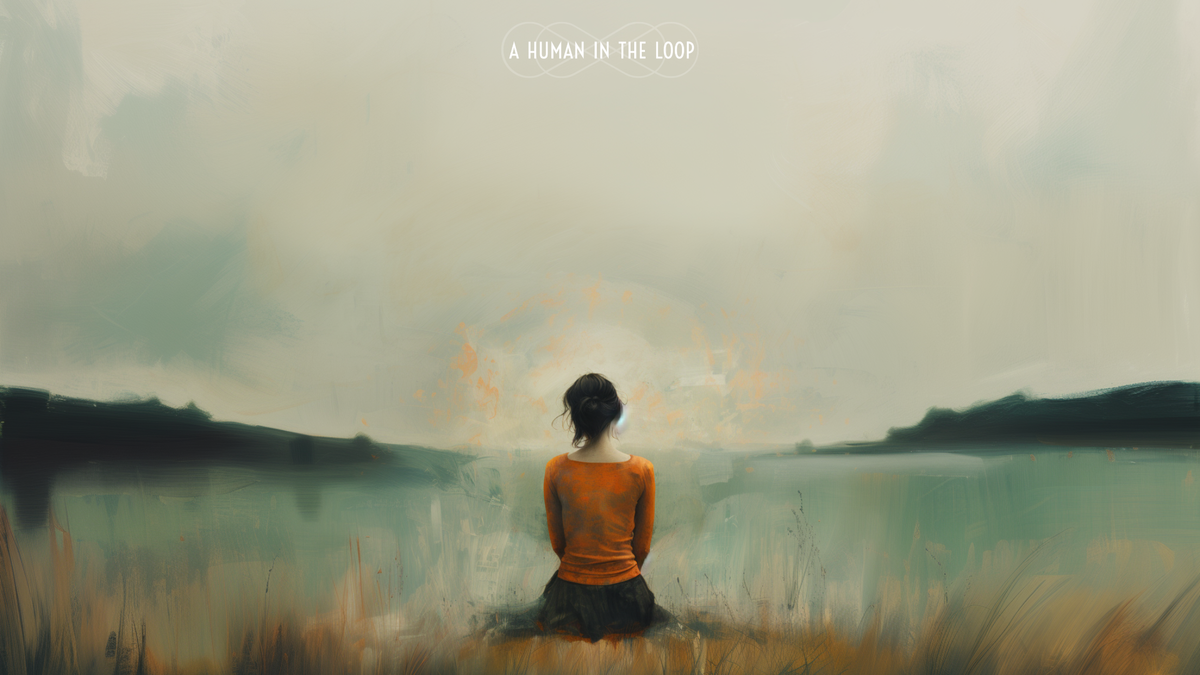
Extra Credit
Every morning, I dedicate around 12 minutes to either a seated meditation or a mindful stroll around my neighborhood – no phone, no music, just me.
It helps me set a tone for the day and prioritize the never-ending list of tasks I've committed to for the day.
I recently started following the Ten Percent Happier podcast. It has a variety of content, from short guided meditations (Check out the one below!) that are easy to incorporate into a busy day to longer episodes that delve into various topics. Enjoy!
Take less than 8 minutes and try this mindfulness meditation.

